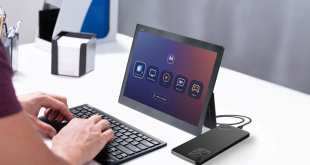With Microsoft announcing that free upgrades to Windows 10 will end July 29th, Ashley Sterland, communications director at The Change Organisation looks at whether Windows’ latest incarnation is a hit or a miss amongst consumers.
Officially unveiled in September 2014, Windows 10 went on general release in July 2015. Among its innovative highlights is a selection of what Microsoft describes as “universal apps” which are designed to run across Microsoft platforms such as tablets, smart phones and PCs. Whilst this useful addition to the Window’s frame brings a certain colour and variety to its desktop applications, is the overall Windows 10 experience enough to win over those who felt let down by its predecessors – Windows 8 and it’s less maligned follow-up, Windows 8.1?
Let’s start with the apps themselves: are they mere Window dressing or useful playing, learning and organisational tools? The answer’s a bit of both, really. The Mail and Calendar options are as good as any device could offer, but the Photos and Phone Companion are a feeble match for the android alternative.
Those who would rather apps remained a handheld phenomenon will be buoyed by the improved security, new browser and voice-activated assistant options with Windows 10, making it far more useable than the 8 and 8.1 systems. It also comes with a modified start browser that does away with a lot of irritating and obtrusive ‘live tiles’, a much criticised aspect of Windows 8. Being able to switch seamlessly between touch screen and keyboard is another aid to easier working with Windows 10.
For speed and ease of use, the latest Windows also includes a new ‘Edge’ browser. Among its features is an icon which enables the user to convert a web page into an easy-to-read format, removing adverts and sidebars. This allows focus to remain on core content such as text and pictures. Users can also customise the colour of the background and the size of the font to improve the reading experience.
Windows 10 has improved Microsoft’s split-screen offering, thus multi-tasking becomes less of a chore. It’s made all the easier by a taskbar button which presents a zoomed-out view of all the apps running and makes for simple ‘open window’ selection. It is also possible to create multiple virtual desktops and choose which apps to run on which desktop.
Microsoft has said ‘10’ will be its last version of Windows, with updates, rather than new software launches, taking care of modifications as and when necessary. And that’s a key consideration when we assess Windows 10 as the first anniversary of its worldwide release approaches. If the Windows 10 experience is falling short of expectation in certain areas, Microsoft is listening and ready to upgrade where appropriate.
For the majority of the 300 million machines on which it’s been installed, it would appear Microsoft 10 has already proved a more comfortable ride for its operators than Windows 8 or 8.1. But is it as good as Windows 7? That’s another question entirely.
Ashley Sterland is communications director at The Change Organisation
www.thechange.co.uk
 PCR Tech and IT retail, distribution and vendor news
PCR Tech and IT retail, distribution and vendor news



